Do you consider yourself an ATV/SxS fanatic? Do you often find yourself exploring the gnarliest trails you can find? If so, there’s probably a great chance you already own a winch. If not, a quality ATV and UTV winch like the Warn ProVantage 3500-s I’ve been testing has the potential to elevate your riding experience to new levels by unleashing the confidence to navigate nearly any obstacle without the fear of being stranded. With that said, winches don’t replace common sense, which many folks are lacking. (Editors Note: a quick walk through any WalMart to enjoy some of the shopper’s wardrobe choices ought to be evidence enough to support Lance’s statement.) Knowing how to winch safely not only helps protect the humans involved in the winching process, it also helps prevent damage to innocent trees that often get caught up in a winching scenario gone bad. Being an ambassador of the land and taking the time learn how to winch properly will undoubtedly help keep enthusiasts safe and riding areas open for future off-roaders.
Steel vs. Synthetic Line:
Most reputable ATV and UTV winches are available with your choice of steel or synthetic rope. Knowing which choice is best for your particular riding situation is crucial to making the proper decision.
Winching Mathematics
All winches earn their rating by the maximum amount of pulling capacity they possess. Unfortunately, the maximum pulling capacity happens as the first layer of winch line is wrapped around the drum. As the layers of winch line increase around the drum, the pulling power of the winch decreases. Therefore, to take full advantage of your winch’s pulling power, pull as much winch line out as possible. Using a snatch block in your rigging essentially doubles the pulling capacity of your winch. This means on the first layer of winch line, a 3,500lb winch will have a maximum pulling capacity of 7,000lbs.
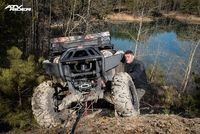
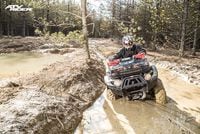
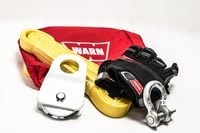
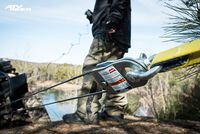
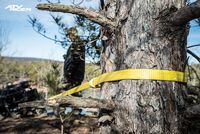
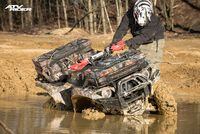
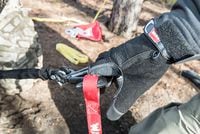
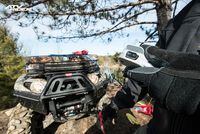
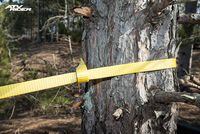
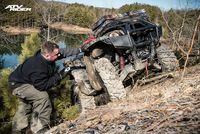
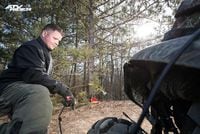
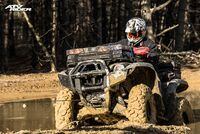
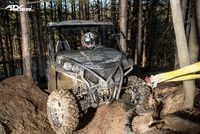
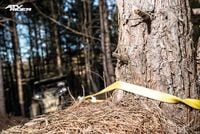

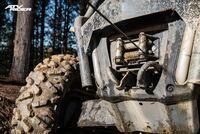
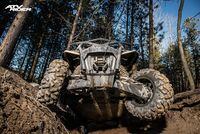

/cloudfront-us-east-1.images.arcpublishing.com/octane/6QOSXJHICFA3BMV35OFPNPISN4.jpg)
/cloudfront-us-east-1.images.arcpublishing.com/octane/3CNXHKXHKNENXPDNAQKDXN6DRE.jpg)
/cloudfront-us-east-1.images.arcpublishing.com/octane/RVY3WQXQIJDVPFKEBNRUKACYEE.jpg)
/cloudfront-us-east-1.images.arcpublishing.com/octane/3PGG32LZEVDYNMOJICKFLGETEE.jpg)
/cloudfront-us-east-1.images.arcpublishing.com/octane/DH42J7GLURDHPNLKLLFACMDROE.jpg)
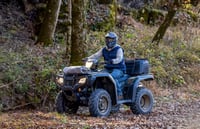
/cloudfront-us-east-1.images.arcpublishing.com/octane/2DRE56376ZG3JNXD46AQ5UPYU4.jpg)
/cloudfront-us-east-1.images.arcpublishing.com/octane/RFXBIV5AVJAWJPNB67Y4HRRUS4.jpg)
/cloudfront-us-east-1.images.arcpublishing.com/octane/ZB2Y3U4RQJFRFEE5KPECXQ5KAQ.jpg)
/cloudfront-us-east-1.images.arcpublishing.com/octane/FUSF5TYRBZBC7OMGMJQORHR3WI.jpg)
/cloudfront-us-east-1.images.arcpublishing.com/octane/NVWDFHAFKRD7JFPGFFYLADPO5U.jpg)
/cloudfront-us-east-1.images.arcpublishing.com/octane/Q5M4LY4I7JHWFNWZZYVTQT7GJA.jpg)
/cloudfront-us-east-1.images.arcpublishing.com/octane/DRSHXW4BEJHPXJI645HSQJVU5I.jpg)
/cloudfront-us-east-1.images.arcpublishing.com/octane/M43WDDP6QZB37P23WIXAEFJJO4.jpg)
/cloudfront-us-east-1.images.arcpublishing.com/octane/U2RTTYSVTVHJFHSUW2DCPEZ6CE.jpg)
/cloudfront-us-east-1.images.arcpublishing.com/octane/65XIAC42RVCADLM7ZAKR2EMAC4.jpg)
/cloudfront-us-east-1.images.arcpublishing.com/octane/LYOQFKOPSRAMBKIHW47ADJZULI.jpg)


/cloudfront-us-east-1.images.arcpublishing.com/octane/OHMN3S7MGVACPGRG4DT6LYJXMY.jpg)
/cloudfront-us-east-1.images.arcpublishing.com/octane/IKAKRMF3PJARLJPJZCHQVPXWRI.jpg)
/cloudfront-us-east-1.images.arcpublishing.com/octane/DJOYRSCRKJC6XC4FTBOCSRLDIQ.jpg)
/cloudfront-us-east-1.images.arcpublishing.com/octane/PNEMPC3GQ5CITFOXJBHYY4DLDY.jpg)
/cloudfront-us-east-1.images.arcpublishing.com/octane/KYJWP45PCRCFBCDB76QUFRMPNE.jpg)